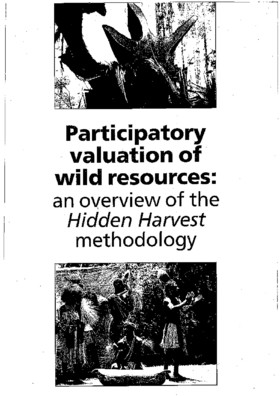Participatory Valuation of Wild Resources: An overview of the Hidden Harvest Methodology

A vast savannah devoid of people and crops, a stretch of roadside gully, or a field border may seem of limited economic value. A forested area may seem to be valuable only in terms of its stand of commercially viable timber. But such landscapes can contain countless wild resources that make a significant contribution to local people’s needs and national economies. Many natural resource management policies overlook these more hidden This paper explores methodological alternatives for understanding the value of wild resources at the local level. The methodology involves seeking local level perspectives on economic questions about resource values and incentives. This paper describes the methodological approach adopted, its conceptual background, and the debates and dilemmas encountered along the way, using examples from the case studies in Zimbabwe, Botswana, Brazil, Nigeria, and Papua New Guinea.
Cite this publication
Available at https://www.iied.org/6142iied